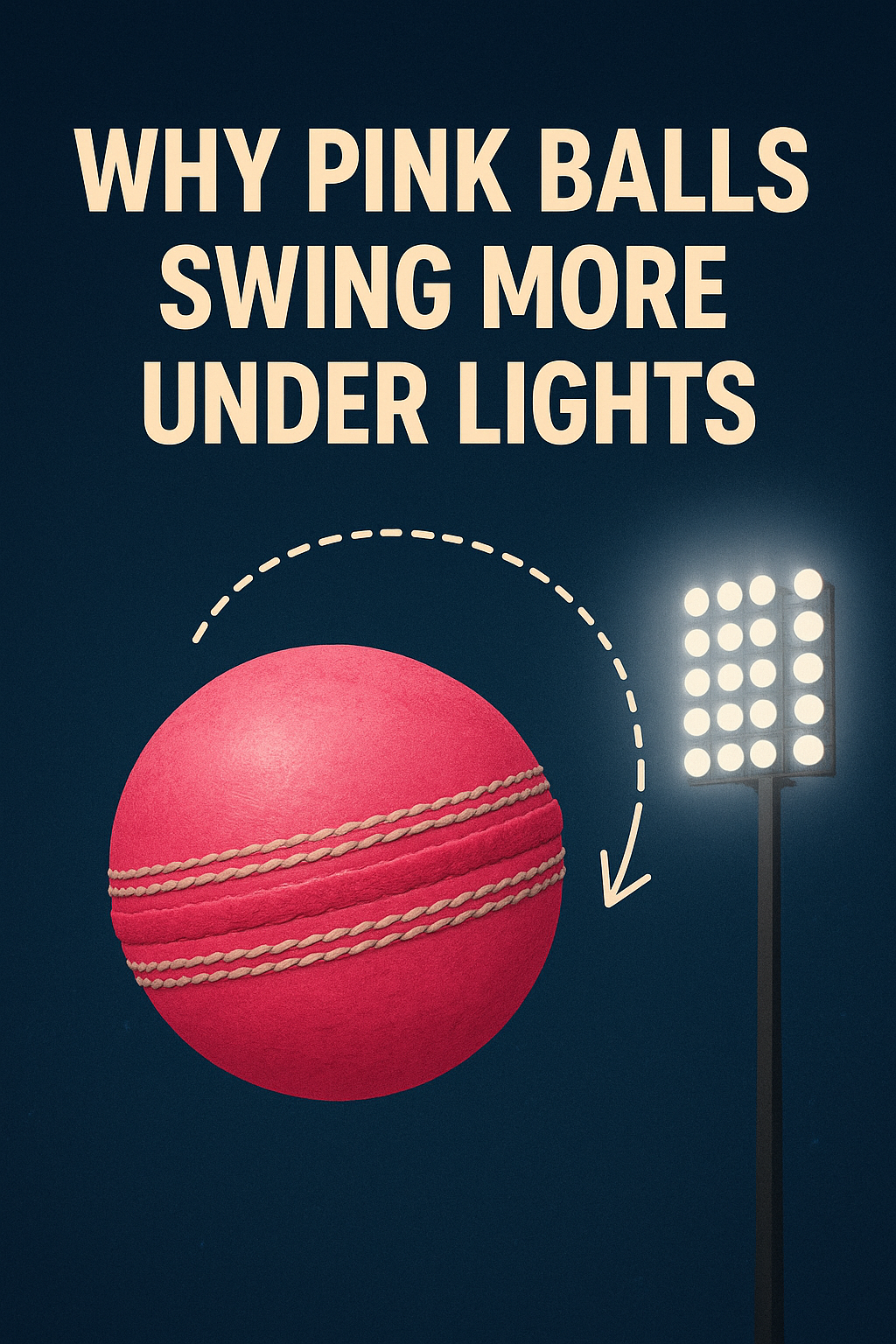Day-night Test cricket has changed the way fans experience the game — and the pink cricket ball is at the center of that transformation. If you’ve ever watched a match under lights, you’ve probably noticed something fascinating: pink balls tend to swing more once the floodlights come on.
But why does this happen?
Let’s break it down in a simple, science-backed way.
1. The Dew and Night-Time Air Make Swing Easier
At night, the air becomes cooler and heavier. This means there are more air molecules for the ball to interact with, which increases aerodynamic movement.
Heavier air = more resistance = more swing.
Floodlit matches often bring dew, adding a thin layer of moisture on the ball. This layer can help one side stay smoother while the other roughens — the perfect recipe for conventional swing.
2. Pink Balls Have a Unique Surface Coating
Compared to red or white balls, pink balls are finished with a heavier lacquer to maintain visibility under lights.
This extra coating:
-
Keeps the ball shiny for longer
-
Helps one side stay smooth naturally
-
Enhances conventional swing in the early overs
The durable finish allows bowlers to maintain shine with less effort, leading to consistent movement.
3. Lights Create Different Visual & Aerodynamic Conditions
Under sunlight, the light is diffused and uniform.
Under stadium lights, the illumination is directional — which means the way the ball reflects light changes dramatically.
This can:
-
Highlight the shiny side
-
Make the seam more pronounced
-
Help bowlers control and present the seam better
Better seam presentation = more swing.
4. The Pink Ball's Harder Core Helps It Move Longer
Pink balls are manufactured slightly harder so they can withstand night-time conditions and stay bright.
A harder ball means:
-
Firmer seam
-
Less wear early in the innings
-
Longer period of movement
This makes pink balls stay “alive” far longer than red balls, especially under lights.
5. The Transition Phase Changes Everything
The most dramatic swing occurs during the sunset-to-night transition, known as the twilight phase.
Why?
Because the air cools rapidly, and the pitch conditions shift as humidity rises.
This is often the toughest batting period in a day-night Test — and pink balls become their most dangerous right here.
Final Thoughts
Pink balls swing more under lights due to a combination of science, weather, and ball construction. Cooler air, extra lacquer, harder cores, and enhanced visibility all team up to give bowlers a massive advantage.
Whether you’re a player trying to understand ball behavior or a fan trying to enjoy the strategy of day-night Tests, one thing is clear:
When the lights come on, the pink ball starts talking.
